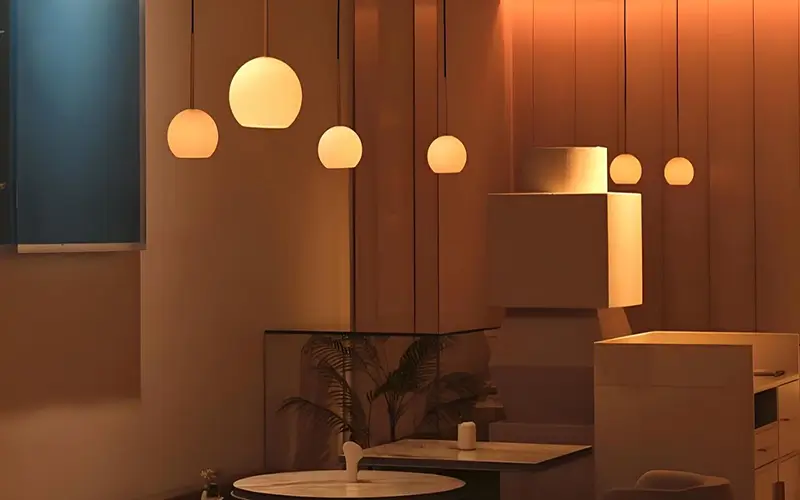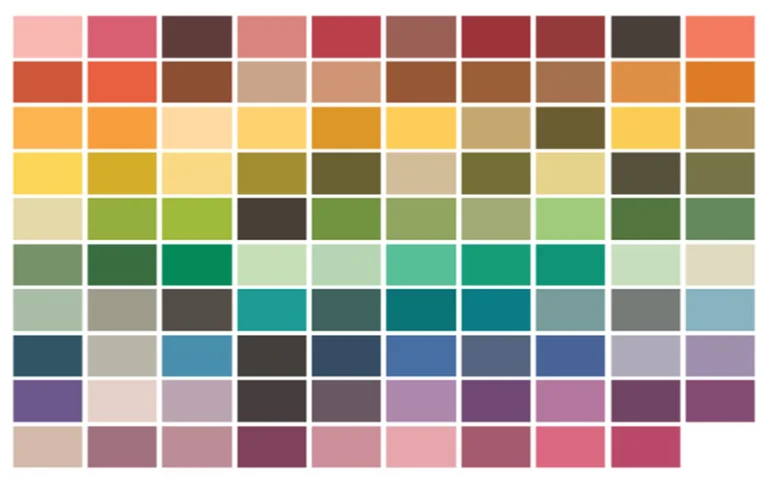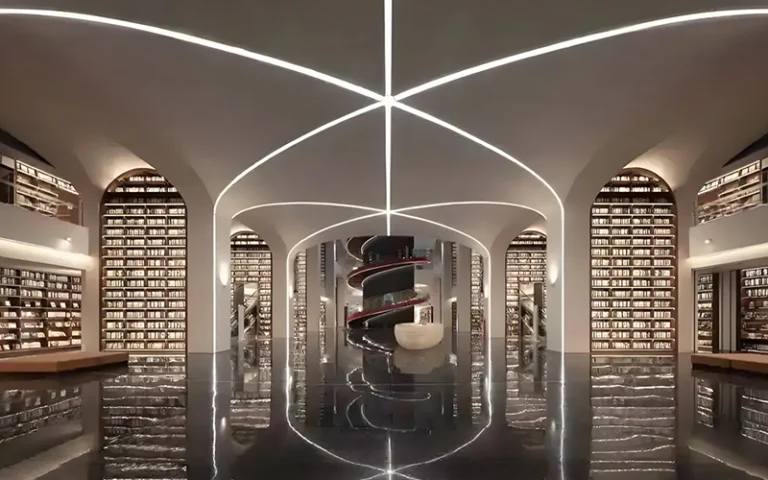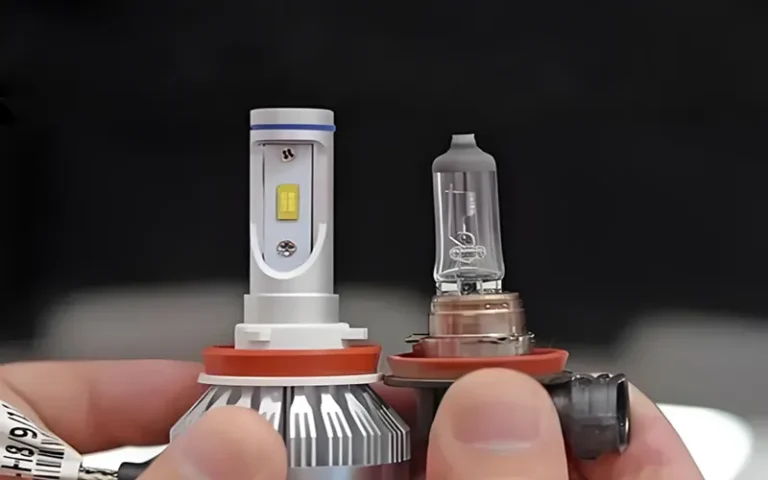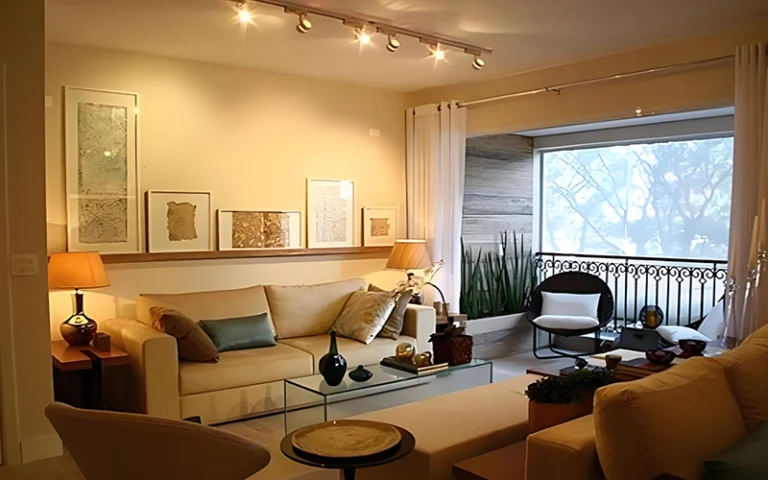2700K vs 3000K: How to Choose Indoor?
Color temperature is a crucial factor when choosing indoor and outdoor lighting. Color temperature not only affects the atmosphere and mood of the space but also has a significant impact on the comfort of living. Whether you are lighting a retail space, an office environment, or a hotel environment, the choice between 2700K vs 3000K will determine the atmosphere, productivity, and overall experience. In this article, we will explore the differences between 2700K and 3000K in detail to help you make an informed choice.
A Brief Understanding of Color Temperature
Color temperature is a physical quantity that describes the color of a light source, usually measured in Kelvin (K for short). It ranges from low color temperature to high color temperature, and the color temperature directly affects the color performance of the light, thereby affecting the atmosphere and visual effects of the indoor space.
What is Color Temperature?
Temperature is an important parameter for measuring the color of the light emitted by a light source, reflecting the temperature of the light source surface. The higher the color temperature, the cooler the light will appear, leaning towards a blue hue;
The lower the color temperature, the warmer the light will appear, leaning towards yellow or red. For example, candlelight has a color temperature of about 1900K, giving off a warm orange-red light, while midday sunlight has a color temperature of about 5500K, giving off a crisp white light.
Kelvin Defines Color Temperature
Color temperature is usually expressed in Kelvin (K). This standard originates from the concept of blackbody radiation in physics. Simply put, the lower the Kelvin value, the warmer the light; the higher the Kelvin value, the colder the light.
2700K and 3000K are both warm colors, and their Kelvin numbers are relatively low, but the slight difference between the two will have different effects on the feeling of space. The light emitted is different, and we can see it with our naked eyes.
How Does Color Temperature Affect Mood and the Atmosphere?
Color temperature is not just a matter of visual perception, it also affects our mood and psychological state. Moreover, our feelings are the same, for example: warm colors (such as 2700K and 3000K) usually make people feel comfortable and relaxed, so they are often used in places such as bedrooms and living rooms where a warm atmosphere needs to be created.
On the contrary, higher color temperatures (such as 5000K or 6500K and above) make people feel awake and focused and are suitable for environments such as offices and kitchens that require concentration and focus. In particular, 6500K is mainly suitable for industrial centralized lighting.
What is 2700K?
The color temperature of 2700K is very popular among users and is generally considered to be a very warm light. And it is the natural light near dusk or the light of traditional incandescent lamps. This light has a distinct yellow tint, making the environment look warmer and safer. More information about 2700K, pls read the article What Does 2700K Mean in Lighting?
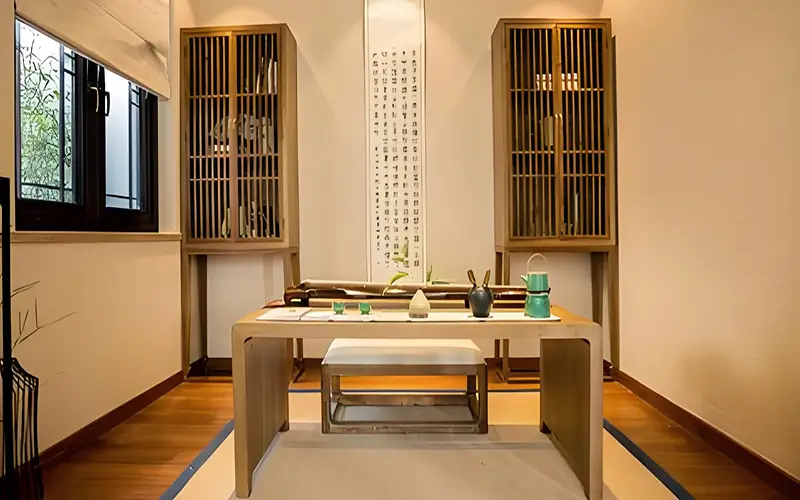
Features of 2700K Lighting
2700K light is usually soft and not dazzling, which is very suitable for use in a relaxing environment. It is mainly used for indoor lighting and is common in architectural and residential lighting.
Its light color is relatively full, which can effectively reduce eye fatigue, and also make the space appear warmer and more intimate.
Best Use of 2700K Lighting
2700K light is very suitable for indoor bedrooms, living rooms, dining rooms, and other places where a warm atmosphere needs to be created. We spend the longest time in these areas, and soft light can help people relax and enjoy a comfortable home life. At the same time, the 2700K light is also suitable for home theaters or reading corners, providing a relaxing and pleasant environment.
When to Choose 2700K Lighting?
If you need to create a warm and comfortable atmosphere, 2700K is an ideal choice. Especially in winter or cold nights, we can imagine the warmth that 2700K brings us. And it can help us fall asleep better and enjoy a relaxing and soothing space.
- Bedroom: In the bedroom, 2700K light can effectively help us relax and fall asleep at night.
- Living room: In the living room, we can enjoy leisure time of gathering and chatting with friends.
- Dining room: Using 2700K lighting in the dining room can make the dining environment more intimate and pleasant, and increase the comfort of dining.
- Leisure area: In areas that need to relax or relax, such as study rooms and balconies, 2700K light can create a gentle and cozy atmosphere.
What is 3000K Lighting?
3000K, like 2700K, is also called warm color temperature. Its color temperature is slightly higher than 2700K. Compared with 2700K, its yellow tone is somewhat reduced, but it still retains the characteristics of warmth. 3000K can be regarded as a transition between 2700K and 4000K (neutral white light) to some extent. It has a sense of warmth, but its light is slightly brighter and cleaner than 2700K.

Characteristics of 3000K Lighting
3000K light is slightly cooler than 2700K, but still retains a certain sense of warmth. 3000K light is not too soft or too glaring and is suitable for use in a variety of environments.
In addition, its light color is more natural and can well show the true color of objects. It will not make people feel too gloomy, and it can also maintain the brightness of the space to a certain extent.
Best Uses for 3000K Lighting
3000K light is perfect for indoor areas such as kitchens, bathrooms, offices, and other places that need to be bright and warm. Why choose 3000K? Mainly because 3000K light can provide enough lighting without making the space look too cold or harsh. It is also suitable for study rooms or studios, allowing you to concentrate on completing tasks in a warm and comfortable environment.
When to Choose 3000K Lighting?
3000K color temperature light is between warm white and cool white, with soft white light and a slight yellow tint. It also brings a certain sense of comfort. If the decoration style of your home is modern or simple, 3000K light can coordinate well with this style and provide a warm and modern environment.
- Kitchen: In the kitchen, 3000K light is also a good choice. It can provide enough brightness without being too cold, making the color of food appear more natural.
- Bathroom: 3000K lighting provides a soft and bright light, especially in winter, without making the space seem too cold.
- Workspace: For a desk or studio at home, 3000K light provides good lighting while maintaining moderate warmth to avoid eye fatigue.
- Hallways and entrances: 3000K light is ideal for transitional spaces such as hallways and entrances, providing sufficient brightness while making these areas look more friendly and welcoming.
- Commercial venues:
For restaurants, hotel lobbies, or retail stores, 3000K lighting can create a professional yet friendly atmosphere and help improve the customer experience.
Compare the Differences Between 2700K vs 3000K
2700K vs 3000K are two common lighting color temperature choices. And their uses and functions are very similar. We need to analyze several aspects to help you better choose 2700K and 3000K.
Light Color 2700K vs 3000K
2700K: The light emitted tends to be soft yellow, which will create a warm, comfortable and relaxing atmosphere. It is mainly used in bedrooms and living rooms, which can make people feel relaxed and intimate.
3000K: The light is slightly white, but it will make people feel warm. But it is more refreshing and brighter than 2700K, and it will be more suitable for atmosphere and task lighting.
Visual Effect 2700K vs 3000K
2700K: It emits a warmer yellow light, which is softer and suitable for creating a relaxing and warm environment. 2700K works better when used at night. This light is visually softer and less likely to cause eye fatigue.
3000K: 3000K light is clearer and brighter, suitable for places that require higher visual clarity. In the study room of a house, 3000K light helps improve concentration and attention.
Application scenarios
2700K: Very suitable for bedrooms, leisure areas, living rooms and other places in the home where a warm atmosphere needs to be created. Especially in cold and hot seasons, it will make people feel warm and comfortable.
3000K: Suitable for spaces that require higher brightness and clarity, such as kitchens, bathrooms, and home study rooms, and can create a professional and warm environment.
Decoration Style 2700K vs 3000K
2700K: Because it tends to be yellow, it is more suitable for traditional and retro-style decoration, making colors such as red, orange, and brown look fuller and more natural.
3000K: This light can show the color of objects more naturally and can better express cool colors, which is more suitable for modern and simple style decoration.
Personal preference and psychological impact
2700K: Suitable for people who like warm and soft light. Especially after working outside for a day and coming back at night, 2700K will help relax the body and mind, and help sleep and comfort.
3000K: Suitable for users who need a certain amount of warm light and a slightly refreshing light. For example, it is suitable for reading and concentration before bed.
What is the Impact of Color Temperature on Interior Design?
Color temperature is very important. It directly affects the atmosphere and emotional expression of the interior space. Different color temperatures can change the visual effect of the room and affect the mood and feelings of the residents.
- Creating atmosphere: The choice of color temperature can change the overall feeling of a room. Lower color temperatures (such as 2700K) usually create a warm and comfortable atmosphere. Higher color temperatures (such as 6500K and above) will bring the brightest and close to natural light.
- Affecting emotions: Color temperature can also affect people’s emotions through visual perception. Warm-toned lights help relax and relieve stress. On the contrary, cool-toned lights keep us alert at all times and people will always be awake.
- Spatial features: The choice of color temperature can also help highlight certain design elements of the space. The right color temperature can highlight the characteristics of an object. Using lights with lower color temperatures can dilute its presence.
- Functional Zoning: By using different color temperatures in different areas, 3000K lights can illuminate workstations and 2700K lights can illuminate leisure areas.
How to Choose Between 2700K vs 3000K?
When choosing between 2700K vs 3000K, it mainly comes down to personal preference and the purpose of the space:
- Purpose of space: If your lighting goal and installation place. If you want to create a warm, comfortable, relaxing environment such as a bedroom, living room, or dining room, then a 2700K color temperature is ideal. If the space requires higher brightness and clarity, such as a kitchen, bathroom, or home office, a 3000K color temperature is more appropriate.
- Personal preference: Some people prefer warmer light because it makes the home environment more intimate and comfortable. Others may prefer a slightly cooler light, especially in places that require longer concentration.
- Design style: The choice of color temperature should also take into account the overall design style of the room. 2700K will be more suitable for traditional or classic-style homes with warm tones. A modern or minimalist space might be better suited to a neutral 3000K color palette, which better reflects the lines and colors of modern furniture and decor.
What is CRI? How Does it Relate to Color Temperature?
Color Rendering Index (CRI) is a measure of how well a light source can reproduce the color of an object. CRI is usually measured on a scale of 0 to 100, with 100 representing the color rendering of a light source under perfect daylight conditions. So the higher the CRI value, the closer the color of an object under the light source is to its true color under natural light.
Importance of CRI
The CRI of a light source is crucial to showing the true color of an object. A light source with a high CRI can better render the colors in a space, while a light source with a low CRI may cause color distortion, making objects look dim or unnatural. So we generally recommend choosing lighting with a CRI>90 or above.
Relationship Between CRI and Color Temperature
Color temperature and CRI are two independent lighting parameters, but they affect each other. Color temperature determines the hue of the light (warm or cool), while CRI determines how well the light can reproduce the color of an object at that color temperature. For example, you can choose a warm 2700K light, but if the light source has a low CRI, the colors you see under this light may appear distorted or blurred.
In general, CRI and color temperature work together to determine the overall quality of lighting. Understanding and choosing these two parameters can help you create the most appropriate visual effects and atmosphere in different spaces.
How to Choose Between 2700K vs 3000K?
There is no absolute answer when choosing between 2700K vs 3000K. However, you need to consider the purpose of the space, personal preferences, and overall interior design style. If you want a warm and relaxing environment, 2700K would be a good choice. If you need to find a balance between warmth and brightness, then 3000K may be more suitable. For more 2700K and 3000K LED strip lights, please consult us.
FAQs
Both 2700K and 3000K are warm colors of light, the main difference is the warmth of the light. 2700K gives off a warmer, more yellow light, which is perfect for creating a cozy and intimate space. 3000K lighting is slightly cooler, but also has a yellow light, which is suitable for areas that need more clarity, such as kitchens and bathrooms.
For the bedroom, we recommend 2700K. Because it creates a warm, relaxing atmosphere, it helps to relax and promote restful sleep. At the same time, it can create a calm environment, which is perfect for the bedroom environment.
3000K is generally better for the kitchen because it provides a neutral white light. It can help us properly improve visibility and color accuracy, which is very important for food preparation and cooking.
For outdoor lighting, 3000K is generally better. This is because it provides brighter, slightly cooler light that enhances visibility and safety while still providing a warm enough hue to be attractive.

